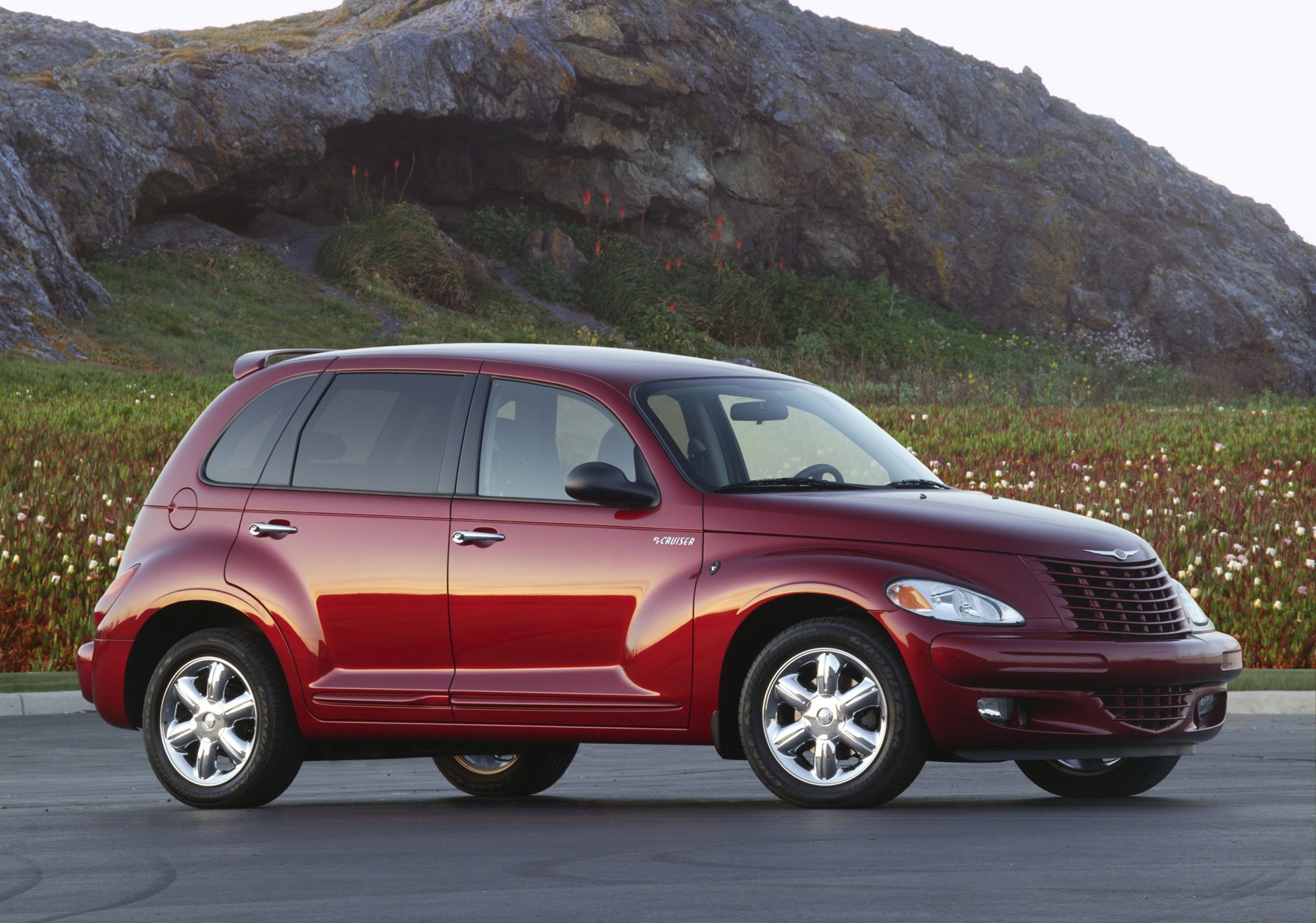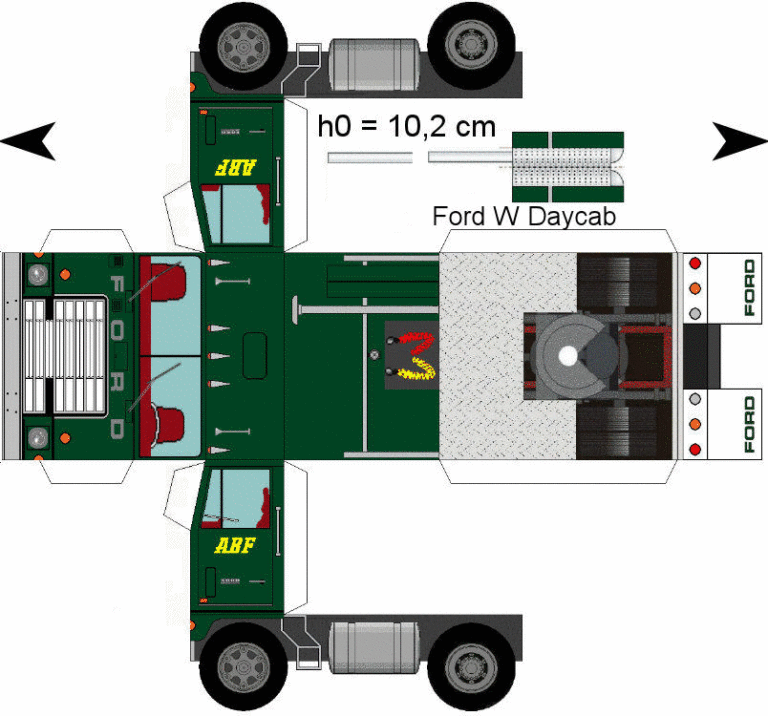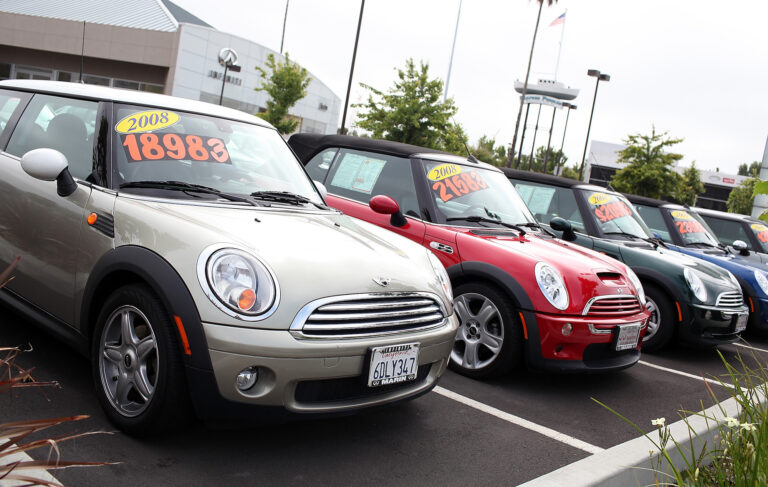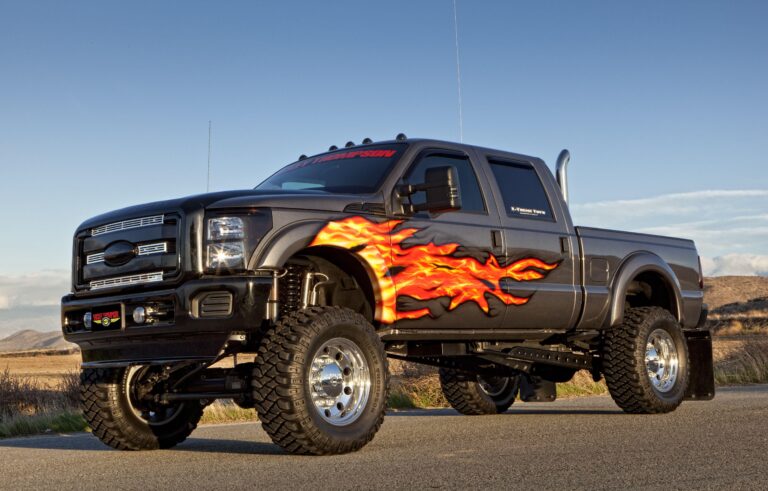Car Brand Names A-Z: A Comprehensive Guide to the Automotive World’s Identity
Car Brand Names A-Z: A Comprehensive Guide to the Automotive World’s Identity cars.truckstrend.com
The automotive industry is a tapestry woven with innovation, engineering prowess, and distinct identities. At the heart of these identities lie car brand names – more than just labels, they are powerful symbols representing heritage, values, performance, and aspiration. From the sleek lines of an Aston Martin to the rugged utility of a Jeep, each name evokes a unique story and a specific place in the global market. Understanding "Car Brand Names A-Z" isn’t merely about memorizing a list; it’s about gaining insight into the vast landscape of manufacturers, their origins, their market positioning, and the evolution of transportation itself. This comprehensive guide will navigate the fascinating world of automotive branding, offering an alphabetical journey through key players, insights into what makes a brand successful, and practical advice for anyone seeking to understand or engage with the car market.
The Alphabetical Journey: A-Z of Global Car Brands
Car Brand Names A-Z: A Comprehensive Guide to the Automotive World’s Identity
The sheer number of car brands, past and present, is staggering. This section provides an illustrative alphabetical tour of some of the most prominent, influential, and interesting car brands globally, highlighting their typical origins or market focus.
- A: Audi (Germany – Luxury, performance, quattro AWD), Acura (Japan/USA – Honda’s luxury arm), Alfa Romeo (Italy – Sporty, elegant, performance-oriented).
- B: BMW (Germany – "The Ultimate Driving Machine," luxury, performance), Bentley (UK – Ultra-luxury, handcrafted elegance), Buick (USA/China – Premium, comfortable, traditional American luxury).
- C: Cadillac (USA – American luxury, bold design), Chevrolet (USA – Diverse range, from trucks to sports cars), Citroën (France – Innovative design, comfort, quirky).
- D: Dacia (Romania/France – Affordable, practical, value-focused), Dodge (USA – Performance, muscle cars, trucks), DS Automobiles (France – Luxury sub-brand of Citroën, distinctive design).
- E: Eagle (USA – Defunct Chrysler brand, focused on sportiness), Everus (China – Honda’s EV sub-brand for China).
- F: Ferrari (Italy – Iconic supercars, racing heritage), Ford (USA – Global giant, diverse range, trucks, popular cars), Fiat (Italy – Compact cars, design-focused, often quirky).
- G: GMC (USA – Trucks, SUVs, professional grade vehicles), Genesis (South Korea – Hyundai’s luxury division), Geely (China – Major global player, owns Volvo, Lotus).
- H: Honda (Japan – Reliable, efficient, innovative engineering), Hyundai (South Korea – Rapidly growing, value, technology, design), Hennessey (USA – Hypercar manufacturer, extreme performance).
- I: Infiniti (Japan/USA – Nissan’s luxury division), Isuzu (Japan – Trucks, commercial vehicles, SUVs).
- J: Jaguar (UK – Luxury sports cars, sedans, SUVs), Jeep (USA – Off-road capability, rugged SUVs), JAC Motors (China – Diverse range, commercial and passenger vehicles).
- K: Kia (South Korea – Value, design, quality, rapid improvement), Koenigsegg (Sweden – Extreme hypercars, cutting-edge technology).
- L: Lamborghini (Italy – Exotic supercars, dramatic design), Land Rover (UK – Premium SUVs, luxury off-roaders), Lexus (Japan – Toyota’s luxury division, reliability, refinement), Lotus (UK – Lightweight sports cars, handling focus).
- M: Mazda (Japan – Driver-focused, elegant design, "Zoom-Zoom"), Mercedes-Benz (Germany – Luxury, prestige, engineering excellence), McLaren (UK – Supercars, racing heritage), MINI (UK/Germany – Compact, fun-to-drive, iconic design), Mitsubishi (Japan – SUVs, pickups, rally heritage).
- N: Nissan (Japan – Broad range, EVs like Leaf, sports cars like GT-R), Nio (China – Premium electric vehicles, battery swapping technology).
- O: Opel (Germany – European mainstream brand, part of Stellantis).
- P: Porsche (Germany – Sports cars, luxury SUVs, performance), Peugeot (France – Stylish design, comfortable, European mainstream), Polestar (Sweden – Performance electric vehicles, Volvo sub-brand).
- Q: Qoros (China – Joint venture focusing on quality and safety).
- R: Ram (USA – Heavy-duty trucks, pickups), Renault (France – European mainstream, design, innovation), Rolls-Royce (UK – Pinnacle of ultra-luxury, bespoke craftsmanship).
- S: Subaru (Japan – AWD, boxer engines, safety, reliability), Suzuki (Japan – Compact cars, SUVs, motorcycles), Skoda (Czech Republic/Germany – Volkswagen Group’s value brand, practical), Smart (Germany – Urban microcars).
- T: Toyota (Japan – Global leader, reliability, hybrid technology), Tesla (USA – Electric vehicles, autonomous driving tech, innovation).
- U: Ultima (UK – Kit cars, extreme performance).
- V: Volkswagen (Germany – "The People’s Car," diverse range, quality, design), Volvo (Sweden – Safety, practicality, Scandinavian design, premium).
- W: Wuling (China – Affordable, practical vehicles, EVs, joint venture with GM).
- X: XPeng (China – Electric vehicles, smart technology).
- Y: Yugo (Serbia – Defunct, known for affordability and simplicity).
- Z: Zotye (China – Passenger vehicles, known for affordability).



This alphabetical listing provides a snapshot of the global automotive landscape, demonstrating the incredible diversity in origin, focus, and market positioning that exists within car brands.
Beyond the Badge: What’s in a Name?
A car brand name is far more than just a label; it’s a strategic asset that embodies the company’s identity, values, and promise to the consumer.
- Heritage and Legacy: Many brands, like Mercedes-Benz, Ford, or Ferrari, carry the names of their founders, imbuing them with a sense of historical continuity and pioneering spirit. Others, like Alfa Romeo (Anonima Lombarda Fabbrica Automobili), refer to their original purpose or location. This heritage often dictates brand perception, linking it to decades of innovation or racing success.
- Marketing and Positioning: A brand name is a powerful marketing tool. "Rolls-Royce" immediately conjures images of unparalleled luxury and bespoke craftsmanship. "Jeep" signifies rugged adventure and off-road capability. Marketers meticulously craft brand narratives around these names to target specific demographics and convey desired attributes.
- Etymology and Meaning: Some names are evocative, like "Genesis" (denoting a new beginning for Hyundai’s luxury line) or "Lucid" (suggesting clarity and forward-thinking in EV technology). Others are acronyms or portmanteaus. The sound and linguistic associations of a name can significantly influence its memorability and global appeal.
- Emotional Connection: Ultimately, car brands aim to forge an emotional bond with consumers. Owning a Porsche isn’t just about transportation; it’s about embracing a performance lifestyle. Driving a Volvo is often associated with safety and family values. These emotional connections are built over decades of consistent branding and product delivery.
Navigating the Automotive Landscape: Tips for Consumers
Understanding car brand names is crucial for making informed decisions in the vast automotive market.
- Identify Your Needs: Before looking at specific models, consider what you need from a vehicle. Are you prioritizing fuel efficiency, passenger space, off-road capability, luxury, or performance? Certain brands specialize in these areas.
- Research Brand Reputation: Each brand has a reputation for reliability, customer service, resale value, and specific driving characteristics. Brands like Toyota and Honda are often lauded for reliability and low maintenance costs, while luxury brands like Mercedes-Benz or BMW might have higher upkeep but offer superior comfort and technology. Online reviews, consumer reports, and owner forums are excellent resources.
- Understand Brand Families: Many car brands belong to larger automotive groups (e.g., Volkswagen Group owns Audi, Porsche, Skoda; Stellantis owns Chrysler, Dodge, Fiat, Peugeot, Citroën). Understanding these relationships can reveal shared platforms, technologies, and even design philosophies, which can influence reliability and parts availability.
- Consider Global Reach: Some brands have a strong global presence, offering consistent models and service worldwide. Others are more regional. This can impact parts availability and expertise, especially if you plan to move internationally.
- Test Drive and Experience: While brand reputation provides a baseline, personal experience is paramount. Test drive vehicles from brands that align with your needs and preferences. Feel the driving dynamics, assess the interior quality, and check the technology features.
The Dynamics of Brand Evolution: Mergers, Acquisitions, and New Entrants
The list of car brand names is far from static. The automotive industry is in a constant state of flux, driven by economic pressures, technological advancements, and changing consumer demands.
- Mergers and Acquisitions: Historically, larger companies have acquired smaller, struggling, or specialized brands to expand their market reach, gain technology, or eliminate competition. Examples include Volkswagen’s acquisition of Bentley and Bugatti, or Stellantis being formed from the merger of PSA Group and Fiat Chrysler Automobiles. These consolidations often lead to shared platforms and technologies across different brands within the same group.
- Brand Rebirths: Some iconic brands that went defunct are occasionally revived, often by new owners seeking to capitalize on nostalgia or a strong heritage (e.g., Maybach as a Mercedes-Benz sub-brand).
- New Entrants and Disruptors: The rise of electric vehicles (EVs) has seen a surge of new brands, particularly from China and the US, challenging established players. Tesla pioneered this, followed by brands like Nio, XPeng, Rivian, and Lucid. These brands often focus on cutting-edge technology, unique ownership models, and direct-to-consumer sales.
- Sub-Brands and Specialization: To cater to niche markets or introduce new technologies, many established manufacturers create sub-brands. Examples include Polestar (Volvo’s performance EV brand) or Genesis (Hyundai’s luxury brand). This allows them to explore new segments without diluting the core brand image.
Challenges and Future Trends in Automotive Branding
The future of car brand names will be shaped by several significant trends.
- Electrification: As the world shifts to EVs, brand identities are evolving. Traditional brands are highlighting their electric sub-brands or new EV lines, while new EV players are building their identities from scratch, often emphasizing sustainability and technology.
- Autonomous Driving: The advent of autonomous vehicles could shift the focus from "driving pleasure" to "mobile living spaces." Brands might differentiate themselves based on interior comfort, connectivity, and the quality of the autonomous experience.
- Digitalization and Connectivity: In-car technology, infotainment, and seamless digital integration are becoming major differentiators. Brands will increasingly compete on their software capabilities and user experience.
- Sustainability and Ethics: Consumers are increasingly conscious of environmental and social impact. Brands that can credibly demonstrate sustainable manufacturing, ethical sourcing, and a commitment to reducing their carbon footprint will gain a competitive advantage.
- Subscription Models and Mobility Services: The concept of car ownership is evolving. Brands might offer vehicles as part of subscription services or integrated mobility solutions, changing how consumers interact with and perceive car names.
Table of Representative Car Brands: Information at a Glance
This table provides a snapshot of various car brands, their country of origin, typical market segment, and a general starting price range (USD, highly variable and subject to change).
| Brand Name | Country of Origin | Typical Market Segment | Notable Characteristics | Typical Starting Price Range (USD) |
|---|---|---|---|---|
| Acura | Japan | Luxury / Premium | Honda’s luxury arm, reliability, sportiness | $38,000 – $70,000+ |
| Audi | Germany | Luxury / Performance | Sophisticated design, quattro AWD, technology | $40,000 – $150,000+ |
| BMW | Germany | Luxury / Performance | "Ultimate Driving Machine," sportiness, tech | $45,000 – $180,000+ |
| Chevrolet | USA | Mainstream / Value | Diverse range, trucks, performance cars | $25,000 – $80,000+ |
| Ford | USA | Mainstream / Global | Trucks, SUVs, popular sedans, innovation | $28,000 – $100,000+ |
| Honda | Japan | Mainstream / Reliable | Reliability, efficiency, engineering | $25,000 – $55,000+ |
| Hyundai | South Korea | Mainstream / Value | Rapid growth, design, tech, warranty | $23,000 – $60,000+ |
| Jaguar | UK | Luxury / Performance | Elegant design, sporty driving | $55,000 – $100,000+ |
| Jeep | USA | SUV / Off-road | Iconic off-road capability, ruggedness | $30,000 – $80,000+ |
| Kia | South Korea | Mainstream / Value | Design, value, rapid quality improvement | $22,000 – $60,000+ |
| Lexus | Japan | Luxury / Premium | Toyota’s luxury arm, reliability, refinement | $40,000 – $100,000+ |
| Mazda | Japan | Mainstream / Driver-Focused | Elegant design, engaging driving dynamics | $25,000 – $45,000+ |
| Mercedes-Benz | Germany | Luxury / Premium | Prestige, engineering, comfort, technology | $45,000 – $200,000+ |
| Nissan | Japan | Mainstream / Diverse | Wide range, EVs, family cars, sports cars | $23,000 – $70,000+ |
| Porsche | Germany | Luxury / Performance | Sports cars, luxury SUVs, precision engineering | $65,000 – $200,000+ |
| Subaru | Japan | Mainstream / AWD | Standard AWD, safety, reliability | $26,000 – $45,000+ |
| Tesla | USA | Electric / Premium | EV pioneer, tech, performance, direct sales | $40,000 – $130,000+ |
| Toyota | Japan | Mainstream / Global | Reliability, efficiency, hybrids, resale value | $22,000 – $65,000+ |
| Volkswagen | Germany | Mainstream / Quality | "The People’s Car," diverse range, quality | $25,000 – $60,000+ |
| Volvo | Sweden | Premium / Safety | Safety, Scandinavian design, comfort | $40,000 – $75,000+ |
Note: Prices are highly approximate and subject to change based on model, trim, options, region, and market conditions. They are provided as a general guide to typical entry-level to mid-range pricing for new vehicles within each brand’s lineup.
Frequently Asked Questions (FAQ) about Car Brand Names
Q1: How many car brands are there in the world?
A1: It’s difficult to give an exact number as it constantly changes with new companies emerging, others going defunct, and sub-brands being created. However, there are hundreds of distinct car brands globally, with major automotive groups often owning multiple brands.
Q2: What’s the difference between a car brand and a car manufacturer?
A2: A car brand is the specific name or identity given to a line of vehicles (e.g., Toyota, BMW). A car manufacturer is the company that produces these vehicles. Often, a single manufacturer (e.g., Volkswagen Group) owns and produces vehicles under multiple different brands (e.g., Audi, Porsche, Skoda).
Q3: Are all car brands named after their founders?
A3: No, while many prominent brands like Ford (Henry Ford), Mercedes-Benz (Mercedes Jellinek’s father’s nickname for her), and Ferrari (Enzo Ferrari) are named after their founders or significant figures, many others are not. Some names are acronyms (e.g., FIAT – Fabbrica Italiana Automobili Torino), evocative words (e.g., Genesis), or derived from locations (e.g., Alfa Romeo – Anonima Lombarda Fabbrica Automobili).
Q4: Why do some car brands have multiple luxury or performance sub-brands?
A4: Manufacturers create sub-brands to target specific market segments without diluting the core brand’s image. For example, Toyota created Lexus to compete in the luxury market, and Honda created Acura. This allows them to offer distinct products and experiences, often with different pricing and marketing strategies, while leveraging shared engineering and manufacturing resources.
Q5: How do new electric vehicle (EV) brands get their names?
A5: New EV brands often choose names that reflect innovation, technology, sustainability, or a forward-looking vision. Examples include Tesla (after Nikola Tesla), Lucid (suggesting clarity and light), Rivian (derived from the Indian River Lagoon, hinting at nature), and Nio (meaning "blue sky coming" in Mandarin, symbolizing hope and a new day).
Conclusion
The world of "Car Brand Names A-Z" is a dynamic and fascinating domain, reflecting centuries of engineering ambition, cultural expression, and market evolution. Each name tells a story, from the foundational legacy of pioneers to the cutting-edge aspirations of new disruptors. Understanding these brands goes beyond simple recognition; it provides a framework for comprehending market segments, technological advancements, consumer choices, and the very trajectory of personal mobility. As the automotive industry continues its rapid transformation, particularly with the advent of electrification and autonomous driving, the identities behind these brand names will undoubtedly continue to evolve, shaping the future of how we perceive, purchase, and interact with our vehicles.






